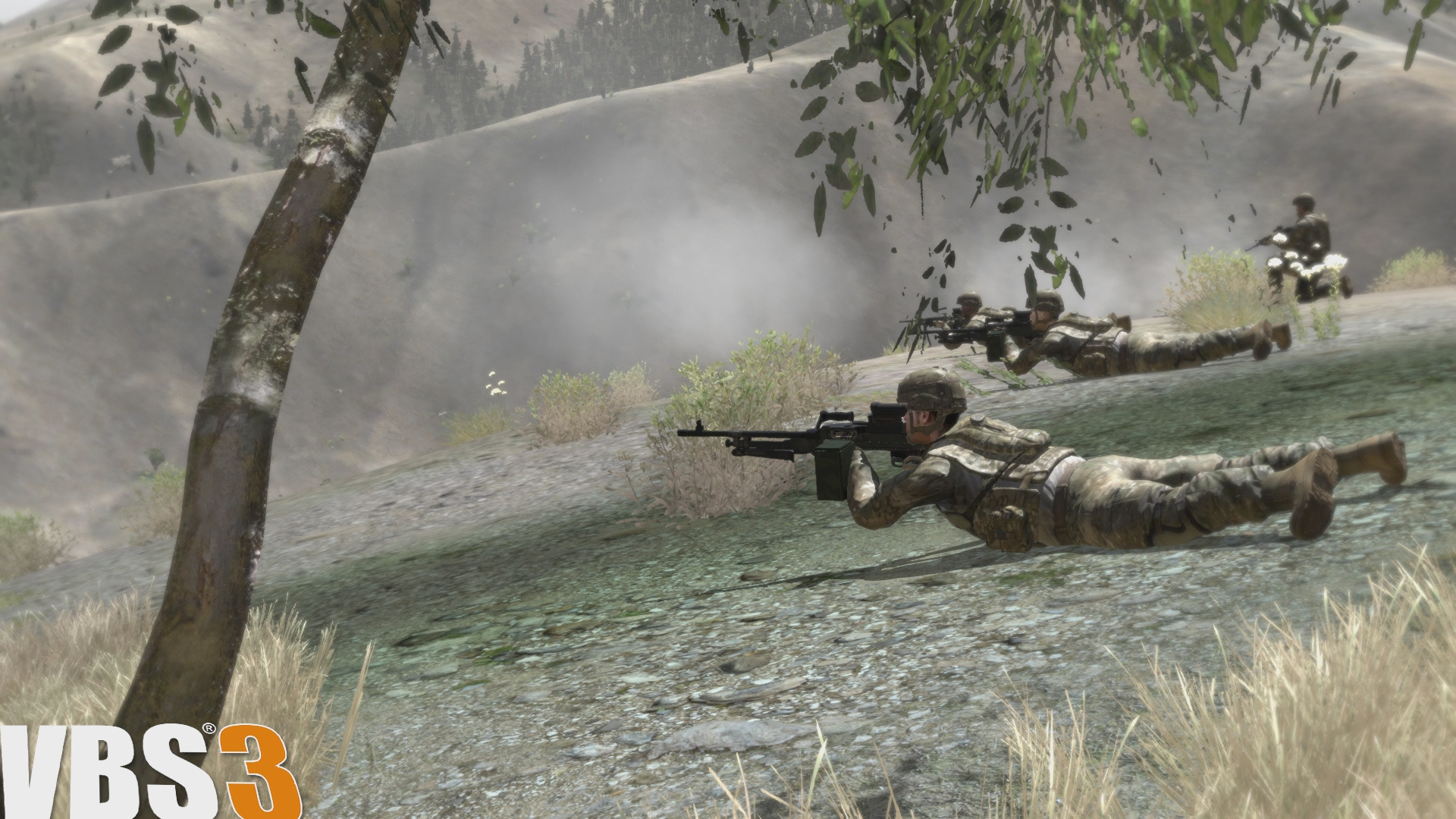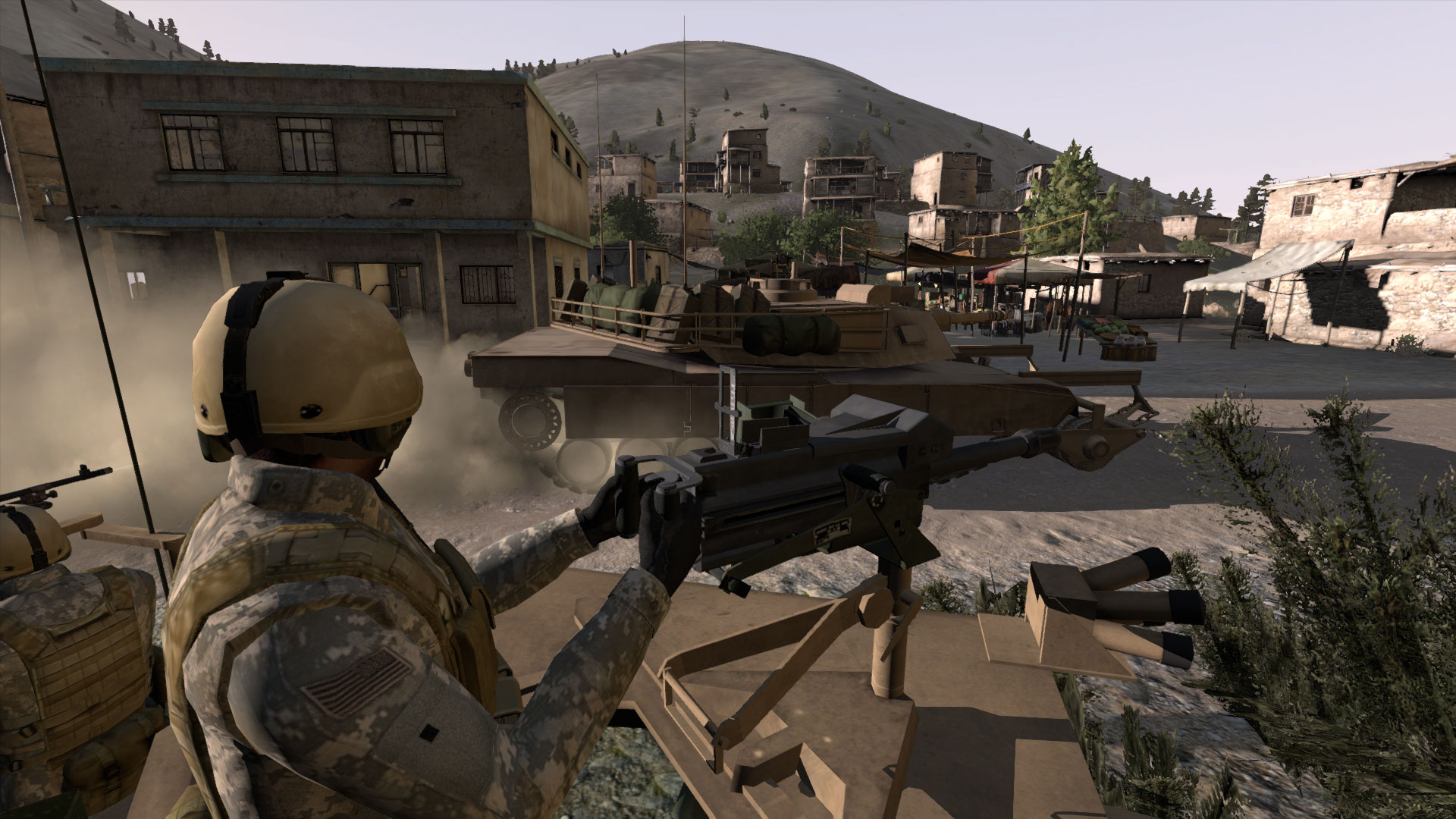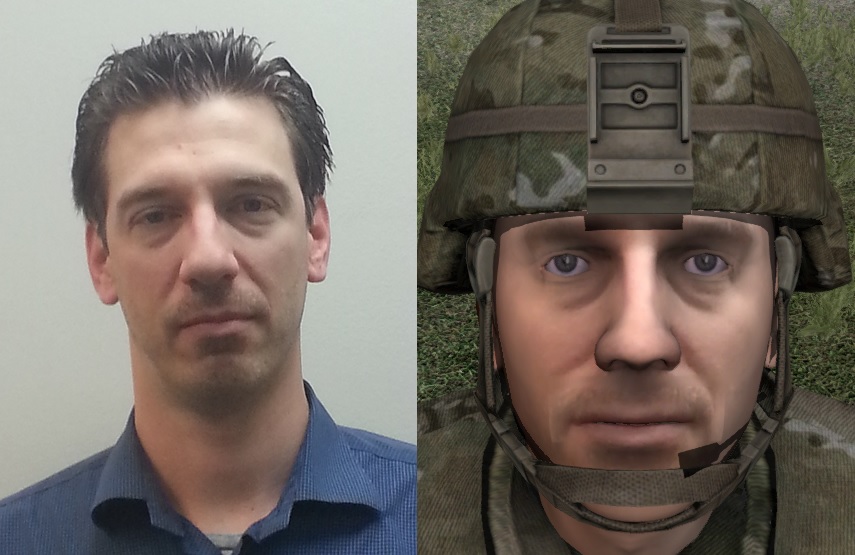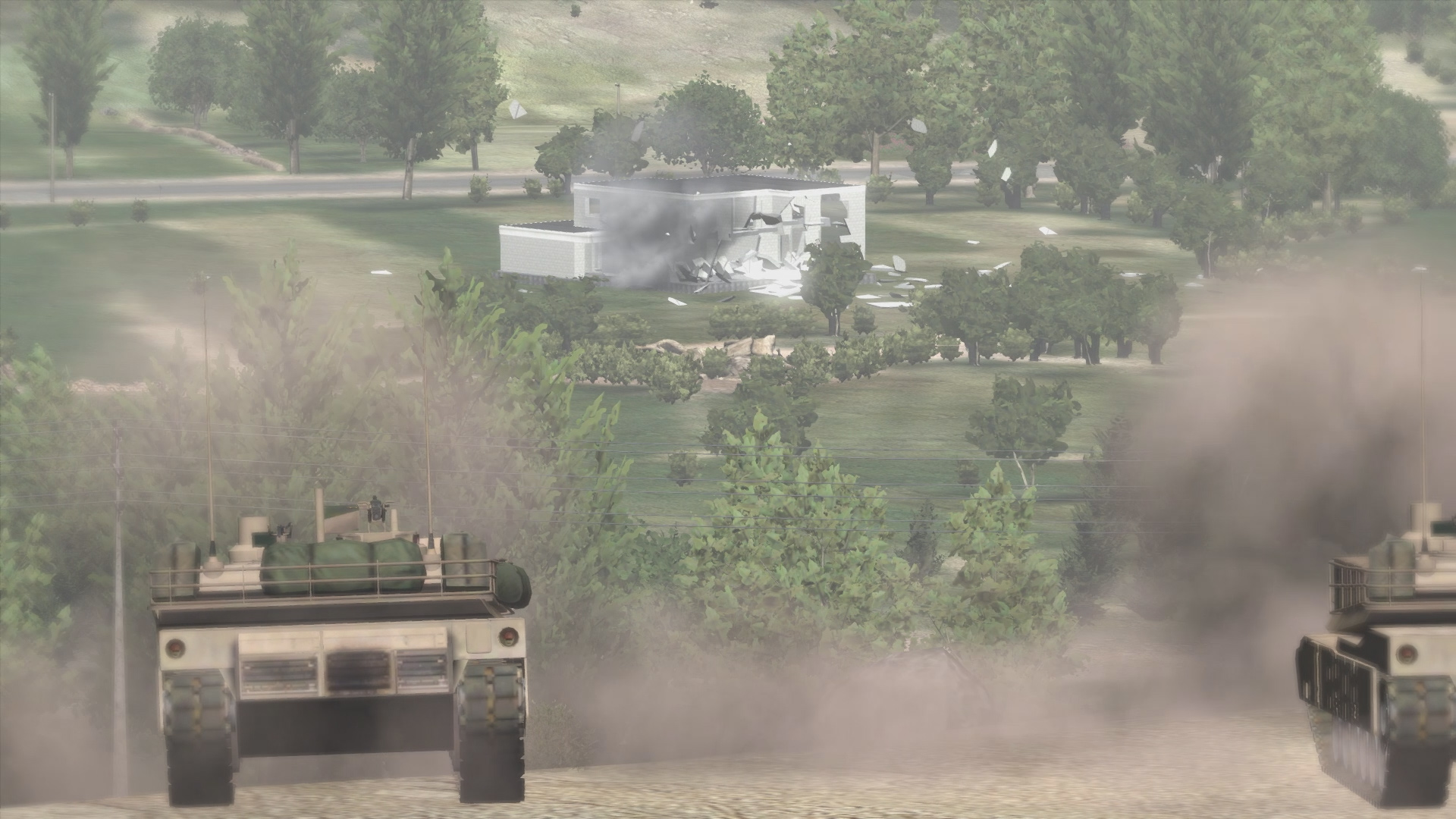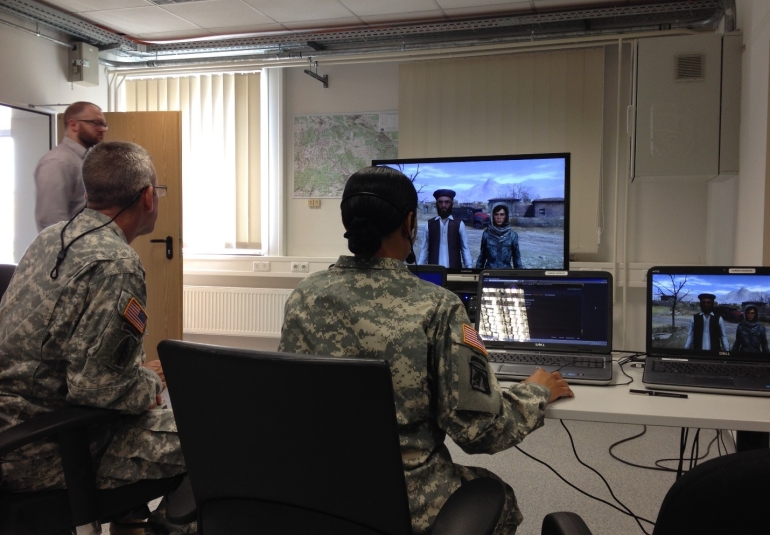Games for Training
U.S. Army
The U.S. Army “Games for Training” program needed a first-person, multiplayer gaming application and training solution that is flexible and versatile with the ability to work in Mission Training Complexes, in unit classrooms or on soldiers’ personal computers for training development. The training solution would need to replicate real battlefield environments, allow soldiers and leaders to practice cognitive skills, and support mission planning and mission rehearsals.
VBS3 brings the user a modernized user interface, improved avatar fidelity, better path planning for AI, new AAR display and capability, multicast networking and many other new features.
The U.S. Army’s Program Executive Office for Simulation, Training and Instrumentation (PEO STRI), awarded Bohemia Interactive Simulations a contract to deliver perpetual licenses of VBS3 and related services to its Games for Training (GFT) VBS3 Concurrency Program of Record in 2017. The U.S. Army previously awarded the Games for Training program in 2013 with BISimTM as a key subcontractor and, prior to that, BISim was a key subcontractor delivering VBS2 for the Army's Game After Ambush contract in 2009.
“VBS3 supports a virtual training environment that is flexible, supports repetition, and is available at the point of need," said Brian Domian, Assistant Product Manager, Games for Training, U.S. Army PEO STRI.
For its 2014 delivery of VBS3 ot the Army, BISim introduced a new multicast system to improve the performance of servers so more players could simultaneously interact in scenarios with less impact to the frame rate. BISim dramatically improved server performance to allow hundreds of players and entities in VBS3.
Another key innovation BISim developed for the Army was an avatar plug-in for VBS3 that produces an individualized avatar modeled on key performance attributes of the soldier who operates the avatar during training. This plug-in allows the U.S. Army to import Digital Training Management Systems (DTMS) datasets to VBS. The plug-in allows administrators to automatically determine and equip players’ avatars based on their military occupational specialty, rank, unit type and billet. This feature also allows administrators to incorporate data provided in the Weapons Qualifications information from DTMS. Once that information is imported into VBS through the plug-in, administrators can quickly set up squads, create an order of battle, and automatically populate these squads for the slotting screen for missions.
An enhanced face editor tool also allows users to generate a photorealistic rendering of the player. In addition, a feature of the plug-in tracks and records statistics about the avatar during missions in VBS including shots fired, shots hit, accuracy, and kills. These statistics can be viewed in real time during missions above avatars’ heads. In addition, BISim added realistic jumping and the ability for avatars to physically strike other avatars with their hands, legs and weapons.
BISim and its partners delivered a number of new capabilities and features to the Army including new advanced artificial intelligence tools that provide more realistic pattern of life features. VBS3 features a suppressive fire feature that can be used when commanding AI troops. AI units will engage in accordance with the defined parameters. The area to be suppressed is defined through an intuitive 3D interface. The suppression system is integrated with both the real time editor and after-action review functions.
Also, included with the Army’s version of VBS3 are SimCentric’s Crowd Ambience and Insurgent Ambience artificial intelligence applications. Crowd Ambience allows users to populate scenarios in VBS3 with hundreds of civilians. Insurgent Ambience simulates insurgent cell operations and patterns of life.
In addition, BISim enhanced its after-action review tools to allow for customizable recording that gives the Army the ability to automate recording and playback views based on trigger events and scenario settings.
Tools Used
Customer Profile
The U.S. Army’s mission is to fight and win the Nation's wars by providing prompt, sustained land dominance across the full range of military operations and spectrum of conflict in support of combatant commanders.
CONTACT BISIM
Have a question about this case study? Find out more about how you can use BISim products to meet your simulation and training needs.
ABOUT US
Founded in 2001, Bohemia Interactive Simulations (BISim), a wholly-owned subsidiary of BAE Systems, Inc., is a global software company at the forefront of simulation and training solutions for defense and civilian organizations. Globally, many hundreds of thousands of military personnel are trained every year using BISim’s high-fidelity VBS software products. More than 60 NATO and NATO-friendly countries, and over 300 integrators/prime contractors use VBS technology, many making significant funding commitments to extend VBS product capabilities. BISim’s customers include the U.S. Army, U.S. Marine Corps, Canadian Armed Forces, French Army, Bundeswehr, Swedish Armed Forces, Australian Defence Force, New Zealand Defence Force and many major system integrators.
